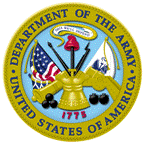United States Department of Defense
Document Type
Article
Date of this Version
2003
Citation
Remote Sensing of Environment 88 (2003) 187–194
Abstract
Malaria reemerged in the Republic of Korea (ROK) in 1993. While limited numbers of U.S. soldiers in high-risk areas use chloroquine/ primaquine chemoprophylaxis to prevent malaria, control of mosquito larvae through larviciding also can be used to reduce the risk of malaria transmission. In order to estimate the cost of larviciding, accurate estimates of the spatial extent of mosquito larval habitats are necessary. The purpose of this study was to determine whether an accurate estimate of the area covered by mosquito larval habitats can be obtained using Landsat 7 Enhanced Thematic Mapper+ (ETM+) and/or IKONOS data for the Korean test site.
To estimate the area covered by larval habitats near Camp Greaves [Paekyeon-Ri, near Tongil-Chon (village)] in the ROK, an IKONOS and a Landsat 7 ETM+ image were classified using a parallelepiped classification. In a comparison with rice paddy field sites, 24 (92%) of the sites were classified correctly on the IKONOS image and 17 (65%) were classified correctly on the Landsat image. Comparing the classifications on a pixel-by-pixel basis, the agreement between the two classifications was 79%. Part of the disagreement was due to the difference in resolution of the two images. In spite of local differences, the two classifications produced similar area estimates.
Although either Landsat or IKONOS could be used in Korea for a reasonable estimate of habitat area, only IKONOS can resolve small irrigation ponds. While ponds represent a small portion of the total larval habitat, they are an important source for mosquito breeding during the late rice-growing season in the ROK since they contain higher larval densities. High-resolution imagery, such as IKONOS, would be necessary for planning and implementing treatment of these smaller habitats.



Comments
U.S. Government Work